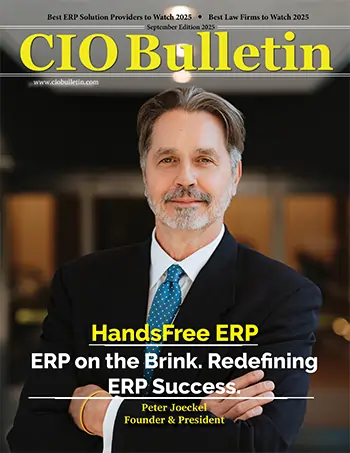Home Technology Sap SAP S/4HANA Implementation App...
Sap

CIO Bulletin
24 January, 2025
When migrating to SAP S/4HANA, businesses must choose between two major deployment approaches: greenfield or brownfield. Each technique has various advantages and disadvantages, making it critical for developers, IT managers, and system architects to completely understand their differences to ensure a smooth and effective migration.
The following piece provides a complete review of the Greenfield and Brownfield approaches, focusing on their key differences, benefits, and optimal use cases. By the end of this guide, you will have the knowledge needed to identify the best strategy for your organization's SAP S/4 HANA migration approach.
A greenfield strategy entails completely reengineering an organization's SAP processes and operations in order to migrate from SAP ECC to SAP S/4HANA implementation. Moreover, with a Greenfield implementation, all of your SAP ECC customizations will be completely removed. This strategy has both advantages and disadvantages. The Greenfield approach might be the new beginning a legacy company needs to revamp its SAP usage and simplify its numerous intricate processes and highly customized code after years of using SAP. For a legacy organization that has been using SAP for many years and has built up multiple complex processes and substantially customized code, the Greenfield method may be the fresh start it requires to rework its SAP usage and reduce complexities.
The Greenfield approach allows users to create migration objects in a prior time which can be implemented on-premise or in the cloud. Furthermore, greenfield solutions have a more economical total cost of ownership and a faster time-to-value. The key advantage of a Greenfield migration is that the transformation begins with an entirely new framework, giving you the freedom to push subjects like standardization and simplification alongside the migration itself.
The Greenfield approach can get SAP S/4HANA up and running in around three months. However, moving your data to a new system is a huge task that will certainly require longer than three months to complete. Moreover, the Greenfield approach is substantially more risky than other implementation techniques. That's because you will have to rebuild any system customizations that were critical to the firm when switching to another SAP ERP system, which will take a lot of time.
Another choice with a Greenfield approach is to start with scratch in some areas to simplify processes, integrations, and custom code. This technique is called "selective Greenfield."
A Greenfield approach requires a complete reengineering of your SAP ERP, whereas a Brownfield approach is equivalent to an upgrade. The Brownfield approach allows you to adopt SAP S/4HANA while also updating your existing SAP processes and systems to the latest version of SAP S/4HANA. You can also keep your existing business processes and data management modifications because you don't have to migrate anything. The Brownfield technique allows you to analyze and modify your existing processes while transferring over the ones that work. The major benefit of Brownfield is that the project often takes less time to complete, resulting in a lesser disruption to your business. A Brownfield strategy enables you to migrate to SAP S/4HANA without the need for a new implementation or affecting existing processes by leveraging existing SAP landscape pieces such as supplier and partner interfaces.
However, Brownfield has some disadvantages. Because you are effectively migrating everything from your existing SAP ERP, it tends to limit innovation. Brownfield implementations should be done on-premise due to the difficulty of migrating customizations and procedures. Brownfield is ideal for customers that want to continue using their current solutions while fast moving from SAP ECC to SAP S/4HANA.
Hybrid implementations may be the most popular deployment model. The hybrid approach allows you to combine all the best features of greenfield and brownfield systems. This method is best suited for large organizations with a lot of data and sophisticated systems. A hybrid approach reduces many risks involved with the SAP S/4HANA migration.
You can decide which aspects of your system to update, keeping the elements that operate while cleaning and transferring your data to the new one. The disadvantage of the hybrid implementation approach is that it needs the use of a third-party tool to obtain the Brownfield and Greenfield components of your migration plans.
When choosing between SAP Greenfield and Brownfield, various aspects must be considered, including budget, business goals, timeline, and IT infrastructure. Greenfield adoption may require more investment, but it may bring larger long-term benefits, such as increased productivity and better business procedures. Brownfield deployment may be less expensive and disruptive, but it may not contain cutting-edge technologies and best practices.
According to a recent SAP S/4HANA transformation studies, only 14% of businesses adopted a full greenfield approach. The majority of the businesses, however, intend to use either a hybrid model that combines both approaches (42%), or a brownfield approach (44%). If you want to capitalize on innovation, reorganize business processes, and adopt cloud technologies like SAP Ariba, you should consider a new deployment. However, if you only use one SAP ECC instance, want to maintain your existing data, and want to go live soon, a system conversion may be your best option. You can combine approaches in program phases, if you have multiple SAP ECC instances and other SAP products.
It can be difficult to identify which SAP S/4HANA implementation strategy is ideal for you. However, the first step is to assess the business need, develop a business case, and plan an approach based on the SAP Activate methodology roadmap. Only then can you develop an implementation strategy.
Conclusion
Both the Greenfield and Brownfield approaches to S/4HANA implementation have unique advantages and disadvantages. The choice between these solutions is determined by aspects such as your company's present SAP system, customizations, business requirements, and budget. Because the migration to SAP S/4HANA involves an array of challenges, it must be well-planned. SAP Architects and SAP CoE can determine whether migration techniques or scenarios are suitable for the company's current and desired architectures. By carefully examining your organization's specific needs, you can decide the optimal way for combining time, cost, and long-term benefits, ensuring a successful SAP S/4HANA migration.







